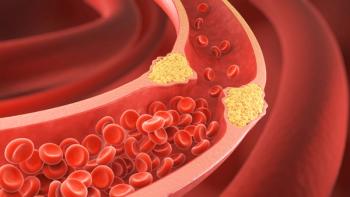
Study Summary: COMBI Study
Study Highlights
- Combination therapy with ruxolitinib and interferon-α2 may allow for a lower dosage of interferon-α2, potentially improving the tolerability of interferon-α2.
- Results of an interim analysis of an ongoing phase 2 study of combination therapy with the JAK1 and JAK2 inhibitor ruxolitinib and low-dose interferon-α2 in patients with polycythemia vera or early-phase myelofibrosis have been reported.
- The preliminary results demonstrate the efficacy of combination therapy with ruxolitinib and low-dose interferon-α2 in patients with polycythemia vera or early-phase myelofibrosis.
Background
Philadelphia-negative myeloproliferative neoplasms (MPNs) include essential thrombocythemia (ET), polycythemia vera (PV), and myelofibrosis (MF). These conditions are characterized by driver mutations in the Janus kinase 2 (JAK2), calreticulin (CALR), and myeloproliferative leukemia virus (MPL) oncogenes, which activate signaling pathways and contribute to clonal myeloproliferation, production of mediators of inflammation, and myelofibrosis. Downstream chronic inflammation and dysregulation of the immune system play an important role in the progression of MPN.1
Ruxolitinib, an anti-inflammatory agent that inhibits JAK1 and JAK2, has been shown to reduce enlargement of the spleen, constitutional symptoms, and inflammation-mediated comorbidities in patients with MF and PV. However, marked reduction of JAK2 V617F allele burden (%V617F) was not observed in the great majority of patients treated with ruxolitinib. A higher allele burden is thought to be associated with more severe and more symptomatic disease; thus, allele burden is considered a surrogate marker for efficacy of treatment.1
PEGylated interferon-α2 (PEG-IFNα2) is an antiproliferative agent and immunomodulator that is effective in the treatment of ET, PV, and early phases of MF. Sustained molecular remission with long-term IFNα2 therapy has been achieved in a subset of patients; however, its use is often limited by its toxicity. Given the potential role of chronic inflammation in MPN progression and sustained efficacy with IFNα2, it was postulated that combining ruxolitinib with IFNα2 would increase efficacy while allowing for a lower dosage of IFNα2, thereby improving IFNα2 tolerability. The efficacy and safety of combination therapy with ruxolitinib and low-dose PEG-IFNα2b in PV and early-phase MF is being evaluated in an ongoing phase 2 trial, COMBI. The results of the 12-month interim analysis have recently been published.1
Study Design
The phase 2, open-label, single-arm COMBI study enrolled 51 patients 18 years and older with PV or low- or intermediate-risk MF with evidence of active disease (eg, primary MF, post-PV MF, post-ET MF). Patients were treated with a combination of ruxolitinib 20 mg orally twice daily and PEG-IFNα2b 35 mcg or PEG-IFNα2a 45 mcg as a subcutaneous injection once weekly for up to 24 months. Dose reductions of ruxolitinib were allowed based on platelet count. At the time the protocol for the COMBI study was developed, the results of the dose-finding study for ruxolitinib had not yet been published; the authors suggest that future studies involving combination therapy with ruxolitinib and PEG-IFNα2 should use ruxolitinib at the recommended dose of 10 mg twice daily.1
Results
At baseline, 94% of the patients were intolerant and/or refractory to IFNα2 monotherapy; 64% of the patients had PV and 36% had MF (n = 32 and n = 18, respectively). The efficacy analysis included all but 1 patient; this patient died before week 2 due to progression of primary myelofibrosis (PMF) to acute myeloid leukemia. All patients were included in the safety analysis.1
Remission
The primary end point was complete or partial remission at 12 and 24 months. At month 12, remission rates were generally higher in patients with MF than in patients with PV. None of the 32 patients with PV achieved complete remission, 9% (n = 3) achieved partial remission, 69% (n = 22) had no response, and no patients had progressive disease. Among the 18 patients with MF, 17% (n = 3) achieved complete remission, 22% (n = 4) achieved partial remission, 33% (n = 6) had stable disease, and 6% (n = 1) had progressive disease. Remission was not assessed for the remaining patients due to discontinuation of study medication or lack of a control bone marrow biopsy.1
Hematologic Response
Key secondary end points included hematologic response, molecular remission (%V617F reduction), and toxicity. With regard to hematologic response, 5 patients with PV and 6 with MF were excluded from the analysis because they were in complete hematologic response (CHR) at baseline. Of the 27 patients with PV included in the analysis, 81% (n = 22) achieved CHR, including 12 patients whose CHR was sustained for 3 months or longer. Of the 12 patients with MF included in the analysis, 92% (n = 11) achieved CHR, including 7 patients whose CHR was sustained for 3 months or longer.1
Molecular Response
A reduction in %V617F was observed in 88% (n = 28) of patients with PV and 83% (n = 10) of patients with JAK2-mutated MF, with no evidence of plateau in half of the patients. A significant decrease in median %V617F from baseline to month 12 was observed in both groups (P <.0001 for both). No patient achieved complete molecular remission, but partial molecular remission was achieved by 19% (n = 6) of patients with PV and 17% (n = 2) of patients with JAK2-mutated MF (1 with PMF and 1 with post-PV MF).1
Toxicity
The most common adverse events (AEs) were hematologic toxicities including anemia (reported by 56% of patients in the PV group and 74% of patients in the MF group), leukopenia (50% in the PV group, 26% in the MF group), neutropenia (0% in the PV group, 16% in the MF group, and thrombocytopenia (28% in the PV group, 32% in the MF group). Other common AEs were arthralgia, gastrointestinal symptoms, and PEG-IFNα2—related symptoms (eg, flu-like symptoms and injection-site reactions). Serious AEs were reported in 45% of the study population (n = 23). Of the 37 reported serious AEs, 4 were determined to be related to the study medication (1 event each of angina pectoris and thrombocytopenia, 2 events of herpes zoster). The discontinuation rates for patients with PV and patients with MF were 19% and 21%, respectively.1
Conclusion
According to the investigators, the preliminary results of the COMBI trial were remarkable given that the results of few prior studies have shown comparable rates of remission in this patient population. Moreover, COMBI study regimen tolerability was comparable with that observed in a study of low-dose IFNα2 therapy in IFNα2-naïve patients, which is noteworthy given that 94% of participants in COMBI were intolerant and/or refractory to IFNα2 monotherapy at baseline. Investigators partially attributed the high rate of serious AEs in COMBI to the large proportion of hospitalizations initiated as a precaution due to the administration of an experimental combination therapy, rather than based on the severity of symptoms. Furthermore, some serious AEs may have been due to the higher-than-recommended ruxolitinib starting dose; fewer serious AEs may be observed with the recommended starting dose of 10 mg twice daily.1
Based on the results of the phase 2 COMBI trial, investigators concluded that the combination of ruxolitinib and low-dose PEG-IFNα2 has a promising potential role in the treatment of patients with early-phase MF or PV intolerant or refractory to IFNα2 monotherapy. Phase 3 studies are required to further assess the efficacy of this combination compared with current standard treatments in patients with newly diagnosed MF and PV.1
Reference
1. Mikkelsen SU, Kjær L, Bjørn ME, et al. Safety and efficacy of combination therapy of interferon-α2 and ruxolitinib in polycythemia vera and myelofibrosis. Cancer Med. 2018;7(8):3571-3581. doi: 10.1002/cam4.1619.
Newsletter
Stay ahead of policy, cost, and value—subscribe to AJMC for expert insights at the intersection of clinical care and health economics.







































